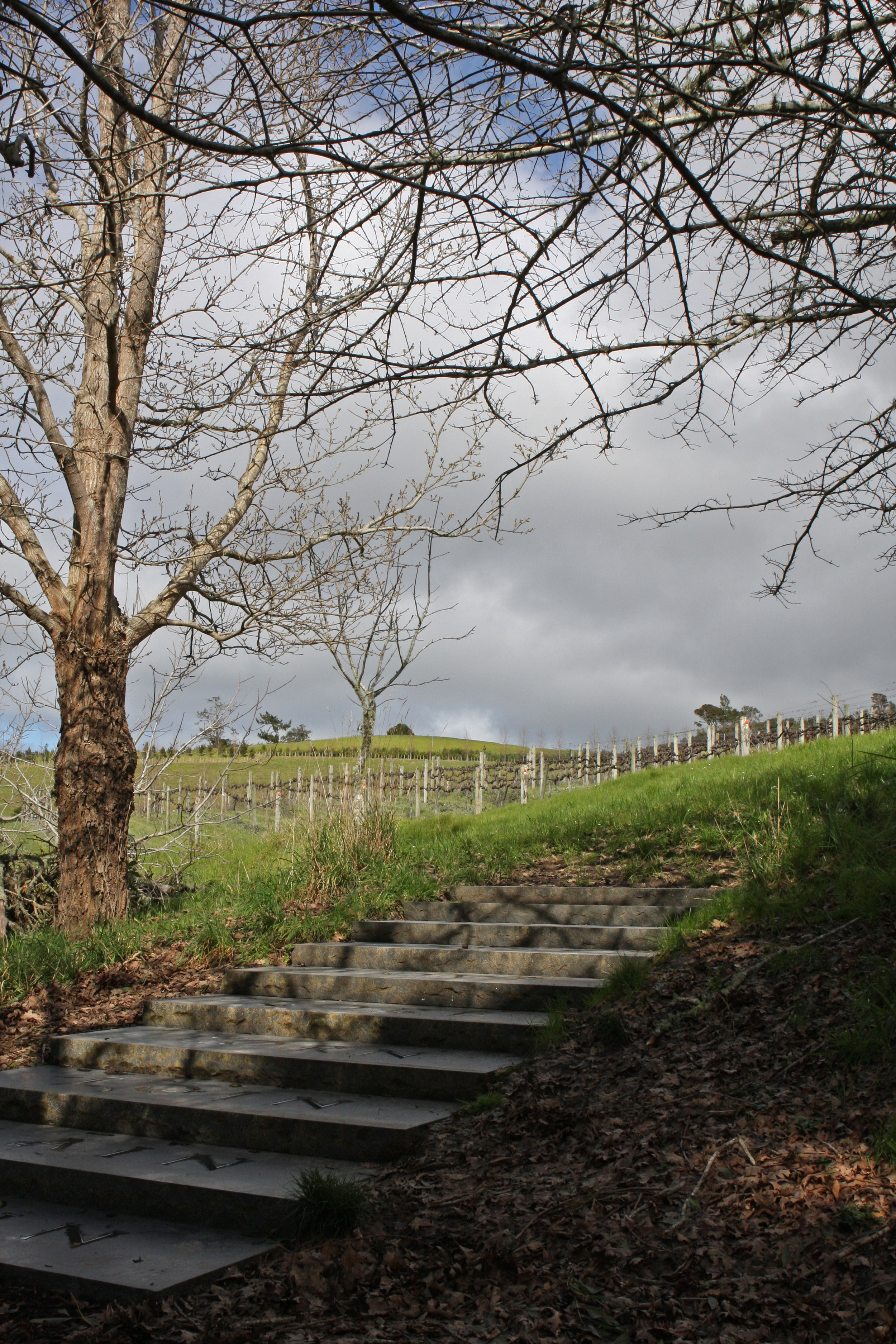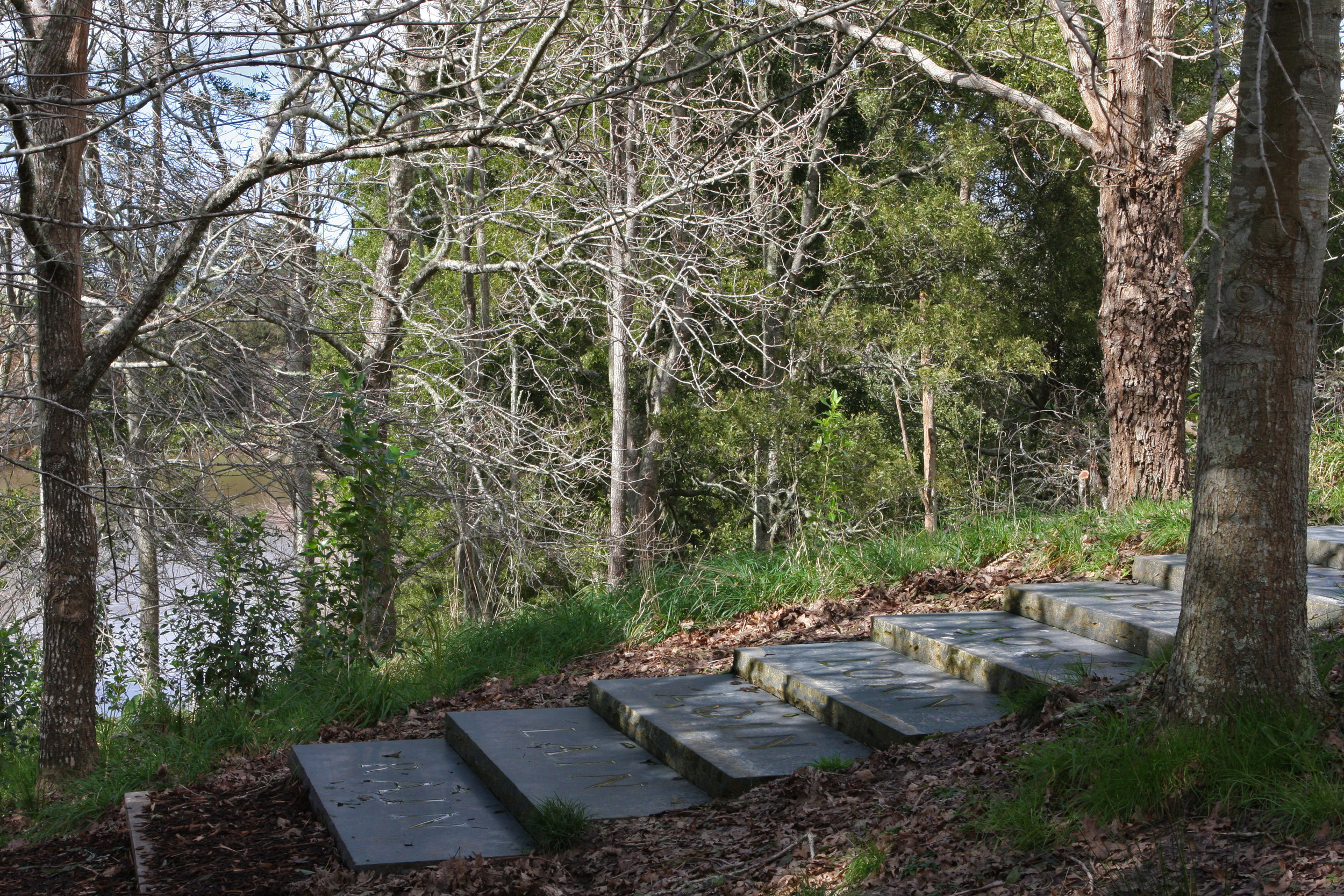Mary-Louise Browne
Meteorol, 2006
Bluestone
Site Specific - commissions also available Price on request
Mary-Louise Browne has been described as a ‘sculptor of words’ and her series Transmutations that began over twenty years ago can be found in a number of significant public places throughout New Zealand. Each word in a chain, or a poem of sorts, changes its form and meaning one letter at a time. Each created for a specific site, these works are particular to their place and people. They reference the site's history, social or political, together with that of the current visitors or occupants. She notes:‘I didn’t want to make single perpendicular sculptures, I was interested in making works more supine, the difference between male and female art.’
In Wellington’s Botanic Gardens, Body – Soul (1996), was created as a staircase leading nowhere, nestled into the side of a hill, rather like an 18th century garden folly. The work references not only the sculptures and stone architecture of graveyards but also the very sentiment of such sacred sites. Browne’s most recent civic work for Auckland City titled Byword (2006), responds to the urban environment and to the city’s own history of culture and governance. Works such as Rape – Ruin (1990), at the Govett-Brewster Art Gallery are more politicised and make comment of both a sexual and feminist nature.
For Brick Bay, Browne has responded to the site with:
MIST MOST LOST LOSE LOVE LORE LORN LOIN LAIN RAIN
As with Body – Soul, Brick Bay’s Meteorol is a two way journey through the landscape. The viewer can and should engage directly with the stepping stones going both up and down the slope. The work has a physical rawness, in terms of the size of the slabs as well as their roughly hewn edges. Like the surrounding pasture, native bush and vineyard, the stone has been cultivated or cultured - words and meaning added. The lettering itself is pristine, and the serif font references classical Roman text. Taken on their own or as a chain of steps, walked slowly or on the run, the steps offer the viewer or participant a unique experience of words and meaning in the landscape.
Other Works





